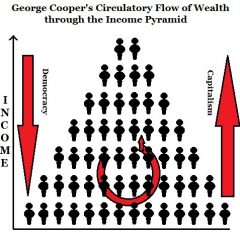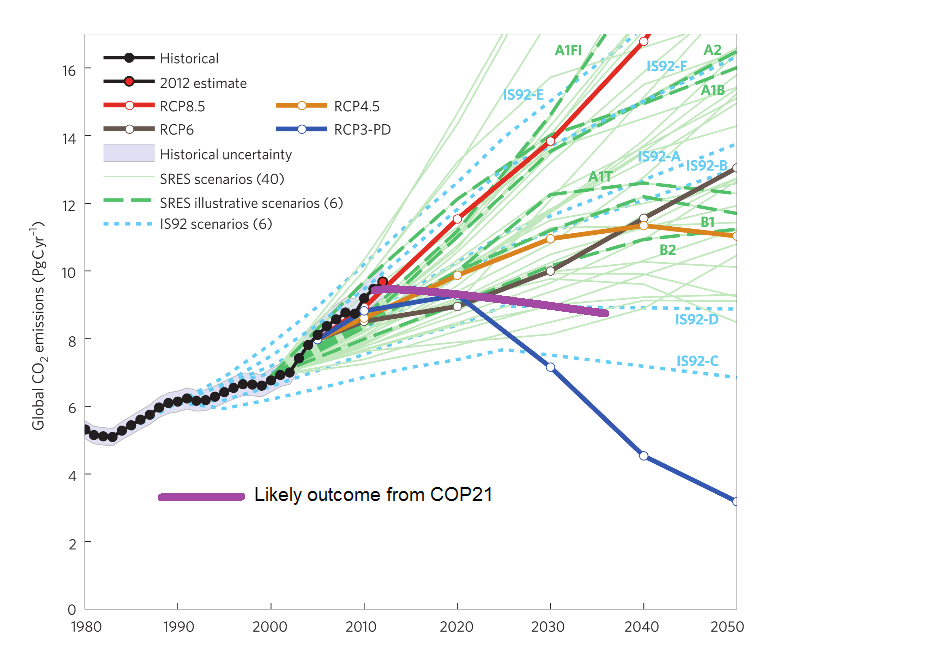South Australia, more than almost anywhere else in the world, is ripe for a Pumped-Hydro solution to its electricity supply problem.
South Australia looks to other states to rescue it from its foolish over-investment in wind-farms. Half-baked solutions won’t fix climate change! Pumped-Hydro will fix both.
SA’s experiment in Wind-power
A 2011 study by Australian electrical engineering scientists, Nicholas Cutler, et al., “High penetration wind generation impacts on spot prices in the Australian national electricity market,” provided a useful snapshot of impact of wind power on the dynamics of electricity dispatch (supply) to the grid.
Highlights identified by the publisher from their study were:
- In South Australia (SA), wind generation has an influence on market prices.
- Little or no correlation is found between wind generation and demand.
- Wind farms in SA are receiving a lower average price than in other States.
- The results highlight the importance of appropriate electricity market design.
From this study, one can conclude that not everything in the SA electricity market is satisfactory. The problems in the system also have the effect of limiting the ability of the system overall to take advantage of the wind power being generated in SA.
As I argued in 2012, the already extensive investment in Wind-power in SA meant that the electricity supply in that state was out of balance. I also argued for an upgrade to the inter-connector with Victoria was needed to fix that problem. Indeed, this was the solution adopted by SA and the national regulator. Yet it has led to even more wind-farms being built in SA, and now the larger inter-connector cannot cope.
A few months prior to the latest electricity generation disaster in SA, the SA Treasurer replied to me that he and his government were proud of their record on approving more wind-farms.
Ridiculous tweet. Very proud of our record of renewable energy. Making things up does this debate no justice @GrahamDLovell
— Tom Koutsantonis (@TKoutsantonisMP) July 17, 2016
With an electrical storm hitting the towers carrying the wind-generated power from the north of the state, and a lightning strike on the primary facility for balancing the load in SA a few days ago, the whole state was blacked-out. Yet we can see that the SA government and the advocates of more renewable energy will not accept any blame for this situation. Instead they change the subject and talk about the higher temperatures leading to the storm. While this is likely to be the case, it has nothing to do with the viability of the particular solution adopted in South Australia, where more wind-farms have been built than the electricity infrastructure can handle.
Pumped-Hydro
A primary problem with wind energy is that electricity generated during times of low demand is effectively squandered, being sold for around $10 MWh. In SA, this “surplus electricity” problem has even caused the Pt Augusta electricity generators to be prematurely retired thus building in more instability into the electricity supply system. This has meant that, during the storm, there was not enough capacity in the system to balance the load, and the Torrens Island generators had to be switched off, creating an outage of the whole state, because of “the outage of the state!” (Of course, this explanation, offered by AGL or the State government, does not make sense.)
Inevitably, electricity is generated by wind at times when it is not needed, mainly during the night, while wind generators have no capacity to increase output during times of peak demand. This means that the electricity generated during these off-peak times is effectively wasted, and in fact adds to instability in the grid, as other generators have to be shut down to accommodate the additional power being produced. It also raises the problem that back-up generators have to be provided “just in case” the wind fails at a critical time.
The conventional solution to both of these problems is to store the electrical generated during the off-peak times using hydro. For example, Denmark do this with their wind energy, selling it to Norway and Sweden, who store it in their hydro systems, using this system “as a battery,” by pumping water uphill, and then releasing it later. These countries then sell the electricity back into the European grid at a higher cost than they bought it, thus providing themselves with a nice little earner, provided the capital cost is not too high.
Also, Pumped-Hydro is used in Australia to store electricity generated by more conventional means during off-peak times, for example in the water storage facility on the Shoalhaven River in New South Wales (NSW). Here there is a hydro-electric power scheme operated as this kind of “electricity storage” at the Fitzroy Falls Reservoir.
The idea of storing electricity via Pumped-Hydro should be a popular concept in Australia: it appeals to our natural sense of maintaining a proper balance, and using everything most efficiently. Proposals of this kind can be found on the internet. It is not possible to assess the viability of such Pumped-Hydro proposals without carrying out detailed investigations. Nevertheless, the simple proposition is that, if the pumping cost plus the cost of the off-peak electricity, plus a return on the capital cost, was less than the final sale of peak electricity then we would have a viable proposition. For example, the following rough figures help us to put the concept into context:
- Electricity stored: 6 hours a day at 500 MW = 1000 GWh per annum.
- Cost of electricity purchased = $15 MWh = $A15m
- Electricity sold at $150 MWh = $A150m
- Gross Margin of $A135m
- Other costs of $A10m
- Net Margin of $A125m
- This could support an investment of at least $A1 billion in infrastructure.
One does not normally associate hydro electricity with SA – the driest state in the driest continent. Nevertheless, if the Pumped-Hydro concept did prove to be economically viable, one could build such a facility in SA just off the River Murray, with one end of the system being adjacent to Nildottie, where the elevation is 43 metres, and the other being just north of Sedan Flats, where the elevation is greater than 300 metres, giving a very healthy 260 metre drop, in two steps. A rough map of this location (with apologies to the owners of this land) follows:
With the UK having recently approved the development of a new uranium nuclear facility, with a guaranteed cost of £92.50/MWh, one could say that pumped-hydro is becoming a more viable concept by the day. The costs of wind + Pumped-Hydro are likely to be less than half the cost of current generation nuclear power, and has none of the very large downsides that can be attributed to nuclear.
It should be surprising that those most concerned about climate change are not pushing this concept, but it isn’t. They are obsessed with solar, and nothing but solar will meet the objective of a de-industrialized world.
It should be surprising that the advocates of nuclear, on the basis of the unreliability of wind for generating electricity, do not endorse this approach. But true believers cannot be shifted.
It looks like the burden of coming up with a viable way forward for electricity generation will be left to the politicians, but even these are so blind that they cannot see the “writing on the wall,” preferring to pursue more “sexy” alternatives.


